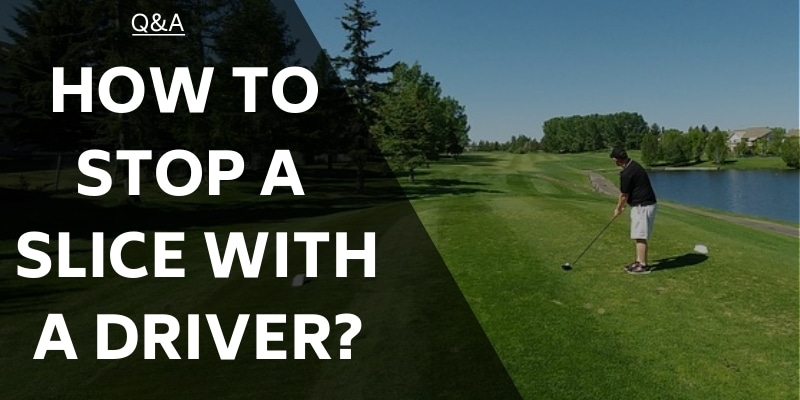Golf launch monitors offer a host of benefits for serious practice and even leisure. They are affordable, easy to use, and practical. Today we take a look at how golf launch monitors work.
One thing we have learned from the Covid-19 pandemic is that life is unpredictable and throws curveballs at us for which we are not prepared.
For months we were unable to venture too far outside our houses without the threat of attracting the virus. No golf was allowed, no driving range experience to tap on, and work out some flaws in your game.
Fortunately, we have launch monitors for use inside and outside that can identify weaknesses and immediately show improvements that you have made in your swing.
As the popularity of launch monitors has grown over the decades, so have the affordability made it possible for almost anyone to put a version of it in their golf theatre.
What’s more, is that you can add on components and turn them into a golf simulator that will provide hours of fun and practice with friends and family.
Launch monitors provide feedback on a variety of data related to your golf swing and the trajectory of the club as well as the reaction of the golf ball after impact. Although not all launch monitors provide all the information they all provide a subset of the data.
Ball Data
- Ball speed
- Smash factor
- Launch angle
- Launch direction
- Spin axis
- Spin rate
- Maximum (apex) height
- Carry distance
- Side distance (curve)
- Total distance
- Side total distance
- Landing angle
- Hangtime
Club Data
- Club speed
- Attack angle
- Club path
- Swing plane
- Swing direction
- Dynamic loft
- Spin loft
- Face angle
- Face-to-path
Launch monitors are normally found as a small box containing either a radar (doppler technology) or cameras (photometric technology) positioned behind or parallel to a golfer to take readings of your swing and the impact area. Complex algorithms are used to calculate a wide range of data.
Doppler radar systems can accurately measure ball-flight data while camera-based systems calculate the ball-flight data.
Club fitters predominantly use launch monitors to fit you with the correct clubs to suit your swing mechanics and swing speed.
Accuracy of data is significant in guiding you to improve your golf. Be aware that doppler systems’ accuracy can be influenced by prevailing weather conditions when used outdoors.
Doppler and photometric technologies are extremely accurate and should not influence your purchasing decision.
The top-end launch monitors are accurate within +- one mph of the ball speed, +- one degree of the launch angle, +- 250 rpm on spin measurements, and +- two degrees of the side angle. The accuracy of data on more affordable launch monitors can compete with the best but your set of data may be smaller.
Top-end launch monitors are expensive and can cost in excess of $40,000 which puts them out of reach of most golfers. It’s mainly professional golfers, coaches, and club fitters that use these launch monitors. Fortunately, there is a huge range of affordable systems that can provide a subset of data.
Although not inexpensive, launch monitors are affordable. It would be highly advisable to sit out the purchase of the next driver to be released and invest the money in an affordable launch monitor. You will gain more from the feedback received from the launch monitor than the extra distance from a new driver.
The two most frequently used and most popular technologies used in both lower and upper-end launch monitors are:
Doppler Radar Technology
Doppler effect, named after Austrian physicist Christian Doppler, is speed measurement through the use of radar sensors. Fixed-frequency radio waves are continuously sent from the transmitter until it strikes a moving object which reflects the waves at a different frequency.
The variance in frequency provides information regarding the presence and the speed of the moving object.
Another example of the Doppler effect is the sound of a siren on an emergency vehicle. The sound of the siren that you hear on approach differs greatly from the sound of the siren that you hear as the emergency vehicle moves away from you. The change in sound is caused by the Doppler effect.
FlightScope is the leading launch monitor using Doppler technology since the introduction of the technology in 1989 to track fast-moving objects in the defense industry. This technology is used in all sports that involve fast-moving projectiles such as golf, cricket, baseball, and many more.
Photometric Launch Monitors
The category name is derived from photo- pictures, metric- measuring.
Photometric launch monitors consist of a single or a series of high-speed cameras. The more cameras and the higher the speed of the cameras in a launch monitor, the more accurate the information is that is provided.
Cameras capture club and ball data at impact and then calculate the flight and distance performance using complex algorithms in the software.
This is quite astounding considering that the impact lasts for approximately 0.0005 seconds. This is all the time available to gather the data required for the complex calculations.
A series of photographs are taken directly before and after impact and compared to calculate the flight path, ball characteristics like spin, and distances.
As with laser launch monitors, the ball trajectory can be displayed on a screen in real-time or after the shot.
Foresight’s GCQuad launch monitor comes with 4 cameras to take pictures from 4 angles for more accuracy. It and can provide clubhead information through their Head Measurement Technology. This is done via a series of stickers applied to the clubhead enabling cameras to detect the path and provide clubhead information such as attack angle, dynamic lie at impact, dynamic loft, face angle, face-to-path, swing path, and impact point.
Wearable Swing Analysers
Some launch monitors can be bulky and heavy to cart around and use on the golf course or driving range. With the innovative technology available many manufacturers have added wearable swing analyzers to their ranges.
These devices are small and lightweight that can be worn on your arm or even added to the back-end of your club‘s grip. It sends data via Bluetooth to your cell phone for viewing and transfer to your laptop.
It can only provide limited data about your swing and clubhead data as there is no way of collecting data at impact.
To turn your launch monitor into a full-blown golf simulator you will have to acquire some accessories such as an impact screen or enclosure, projector, hitting mat, PC or tablet, and simulator software.
Buying a full-blown simulator is rather expensive and can cost upwards of $100,000.
Final Thoughts
Possessing a launch monitor will enable you to get ahead of the competition whether you are a professional golfer, competition golfer, or a competitive amateur. It can be used indoors during difficult times and when the weather won’t permit you to spend some time outdoors.
Both laser (Doppler technology) and photometric devices will stand you in good stead and provide accurate information.
Ultimately your budget and personal preferences will dictate which device you will acquire but rest assured that it is money well spent and an investment in improving your golf.
Happy swinging and collecting data.
Any feedback or questions are welcome in our comments section below.
Related Articles
- The 5 Best Golf Launch Monitors on The Market
- GCQuad Review; Could This Launch Monitor Improve Your Game?
- GCQuad vs Trackman Launch Monitor Review
Nick is the founder of GolfSpan and an avid golfer. He's not quite a pro but has over 15 years of experience playing and coaching golfers worldwide. His mission is to bring the golfing community a better experience when it comes to choosing the right golf gear and finding the right setup for your game.






